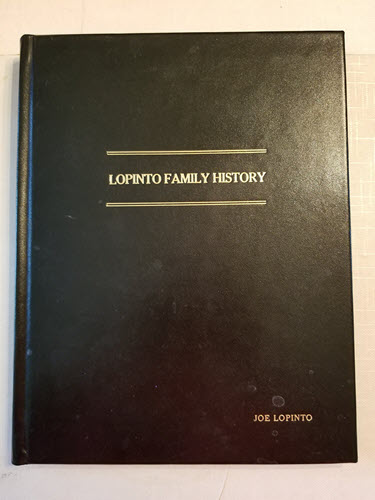Your elder had a full and rich life before becoming a parent and grandparent.
Mom and I hosted Christmas Eve this year and it was lovely. Eleven cousins gathered around our table. We reminisced about my grandfather and their grandmother who were siblings. We vowed that this would be the year we got together and made homemade ravioli from the family recipe. The youngest are in high school and college now so there was no visit from Santa, but we happily exchanged small gifts between dinner and dessert.
Then, because two of my cousins were headed back home, they exchanged Christmas gifts with the rest of their family at our house. When three siblings opened a DNA kit, their excitement was contagious. “Oh, I’ve always wanted to do this! We’ll find out if we are really Italian!” They committed to sending the DNA kits out the same day, so that no one got the results before anyone else.
This need to connect to our history seems primal and there is a lot of money being made on learning about your ancestry. But it got me thinking. What about the ancestry found in the life history of our elders, their parents and siblings?
So, I have a challenge for you. A 2020 holiday challenge. Stick with me here folks. I know we’ve barely finished recycling the boxes and wrapping paper. I know we are still munching on cookies and leftovers. But this challenge takes some thought and planning.
My challenge? All year long, take small pockets of time and find ways to learn about your elder’s life. Trust me, they had full and interesting lives before they were parents and grandparents. I know. I did it with my grandfather, Joe LoPinto and his siblings and with my dad and his siblings.
Getting Started:
Let your loved one know you want to create a family history and you need their help. If they have grandchildren, involve them. It is a sure way to get your elder’s cooperation.
Ask open-ended questions.
- What is your favorite memory from school? Your favorite teacher/subject/sport to play?
- Was your sister or brother your best friend? If not, who was your best friend? What games did you play outside with friends or as a family?
- What was dinner time like growing up? Did you have a favorite meal, sit at the same place every time, help cook or clean up?
- What were holidays like when you were growing up? What is your favorite family tradition?
- After you graduated from school, did you go to college, into the service, go to work?
- How did you meet grandma or grandpa / mom or dad? Did you have a favorite place for date night? Tell me how you proposed.
- Do you have any hobbies? How did you get started?
- Tell me about your favorite vacation. Where was it and who was with you? Was it your first time on a plane or train?
- Where were you when you heard about Pearl Harbor or that President Kennedy had been shot?
- What is the one thing in our world today that you could not have imagined when you were young?
Ways to engage your elder:
A great way to get started and keep the project going is through pictures. Each time you are together, pull out a picture and ask them about it. When it was taken? Who is in it and where are you? Be sure to write their answers on the back. If you can’t be together, then text a picture and discuss it over the phone. Facetime or Skype is another way to share a picture and start a conversation.
If you can, host a meal with your elder, their siblings, cousins and close friends. When you include other family members, asking each person the same questions and looking over pictures will quickly gather a rich family history.
Technology
When I captured our family history, I did it with an old-fashioned tape recorder sitting in the middle of the table and then hours of transcribing stories. Today, voice to text applications can greatly simplify this process. On the flip side, I treasure hearing these voices now that all of them are gone.
Because you may not have the luxury of being together for an afternoon, technology like Facebook, Skype and drop-in-technologies found with Google Home and Amazon Echo Dot can be used for this project.
Grandpad Tablet
Grandpad has a free companion app and web portal that allows a family to connect to GrandPad’s private family network. You can connect from an iPhone, Android phone, iPad or desktop computer. You a can upload photos as well.
Some final thoughts
Before you start, make sure your senior is settled into their favorite place to sit. If they like to knit or crochet, have them work on something while you talk. It will keep them relaxed. Respect any conversational tangents and don’t rush pauses or try to finish sentences.
Documenting your family history with your elder is a gift to you, to them and to future generations and is a fun way to stay connected.
Some Resources
Voice to text applications can be local or on the cloud. Some will transcribe from other languages.
You can spend hours digitizing your family photographs or use a service. Either way is not cheap in terms of time or dollars.
Note: Advocate for Mom and Dad does not recommend any of these services nor accept any money from them. Any company or service named in this article is for informational purposes only. You must still do your own research.
Disclaimer: The material in this blog is for educational purposes only. It is not intended to replace, nor does it replace, consulting with a physician, lawyer, accountant, financial planner or other qualified professional.

